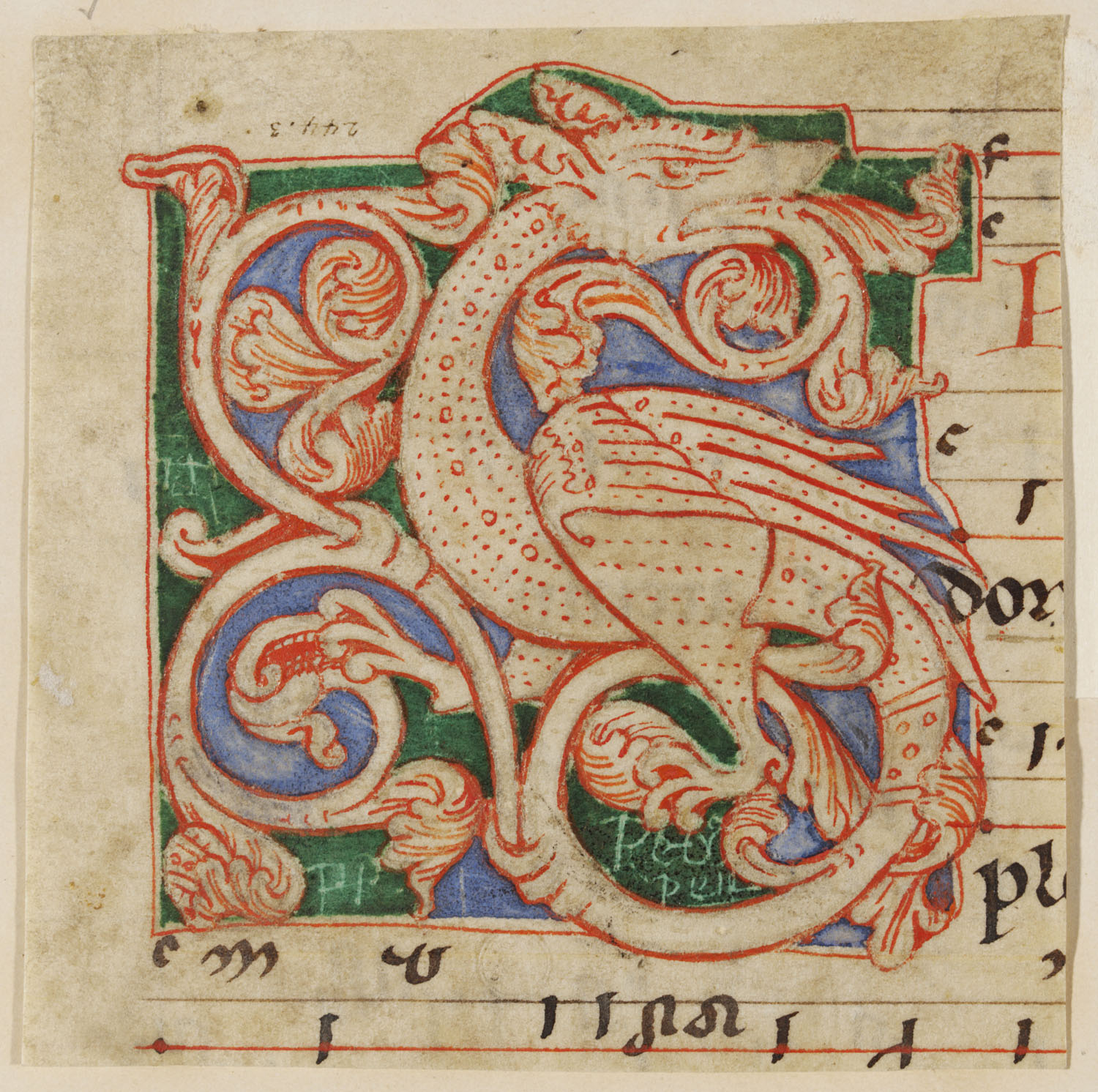
244:3, Leaf from choir-book with initial S in red pen-work on green and blue ground depicting a dragon. Netherland. late 12th century, © V&A Museum
https://www.vam.ac.uk/blog/museum-life/here-be-dragons-2
So, I have a character in 13th century France, who, like his contemporaries, thought dragons were all very well in illuminations and such, (like the above), and for making moral and allegorical points--but as living creatures, they might be considered as exotic, remote, and belonging principally to the past.
Until one shows up in his life. Then he turns to old books for answers.
But what would he have found historically? Some interesting stuff, actually, in ancient bestiaries: https://bestiary.ca/beasts/beast262.htm
While the ancient sources included many fanciful details, even as they sought to be factual and comprehensive, their medieval successors had different aims, viewing the genre as an opportunity for making moral observations. Hence the solid association of the dragon with the devil, combining biblical sources with the ancient descriptions in these bestiary entries (such as those found in the Aberdeen Bestiary and many others).
For more information, and a fascinating overview article on dragons in the minds of Western peoples across the centuries:
Also, I skimmed through this article, which got me tracking in the right direction about bestiaries:
No comments:
Post a Comment